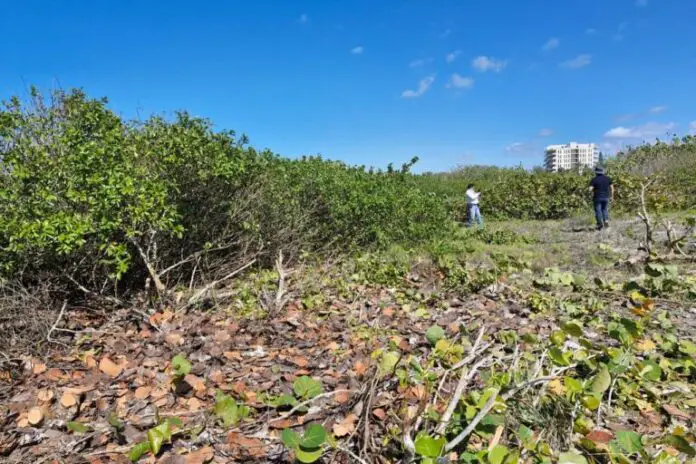The Yucatán state in Mexico, known for its extensive mangrove coverage, faces a pressing conservation challenge. Studies by Cinvestav estimate that approximately 30% of the region’s mangroves have been degraded, affecting around 25,000 hectares of land.
The roots of this issue date back to the 1960s and 1970s when infrastructure projects such as harbor construction and highway development were initiated. These projects disrupted the natural water flow to the wetlands, leading to widespread degradation. Furthermore, recent years have seen an increase in landfill sites for irregular human settlements along the coast, exacerbating the problem.
Hotspots of Mangrove Degradation
The area between Sisal and Dzilam de Bravo has been identified as one of the most affected regions. This region is also experiencing a surge in tourism and real estate development, with many developers building roads that interfere with the natural water flow to the mangroves.
In Sisal, controversy surrounding deforestation reached a boiling point after over 150 residents cleared 23,000 square meters of buttonwood mangroves on the coastal dune. The Federal Attorney for Environmental Protection (Profepa) reported them to the Attorney General’s Office and closed the damaged area. However, social media reports indicate that people continue to invade this sensitive ecosystem.
The Need for Coordinated Efforts
Collaborative work between academia, civil society, authorities, and the private sector is essential to conserve and restore mangroves. Professor Jorge Herrera Silveira emphasizes that enforcing existing laws and regulations is crucial in addressing the issue.
Herrera Silveira advocates for a legal reform to elevate environmental crimes to serious offenses, as he believes these crimes threaten the well-being of society at large. He also proposes that the private sector contribute resources for conservation and restoration efforts.
Consequences of Mangrove Degradation
The consequences of mangrove degradation are already being felt, including a decline in fishing production, deteriorating water quality, increased risk of pollution-related diseases, and loss of tourist appeal.
Herrera Silveira warns that the situation is critical and requires urgent action to curb excessive pesticide use and require pig farms to implement wastewater treatment systems. He also emphasizes the need for sustainable tourism practices and responsible land-use management.
A Call to Action
The consequences of inaction are stark, as witnessed in a case in Spain where a single illness contracted by a tourist on a contaminated beach caused a decade-long decline in tourism. Herrera Silveira emphasizes that Yucatán still has time to act but the margin is rapidly narrowing.
As the situation continues to deteriorate, it is imperative for authorities, civil society, and the private sector to work together to address this pressing conservation challenge and ensure the long-term sustainability of the region’s mangroves.
Source: 24 Horas Yucatan




